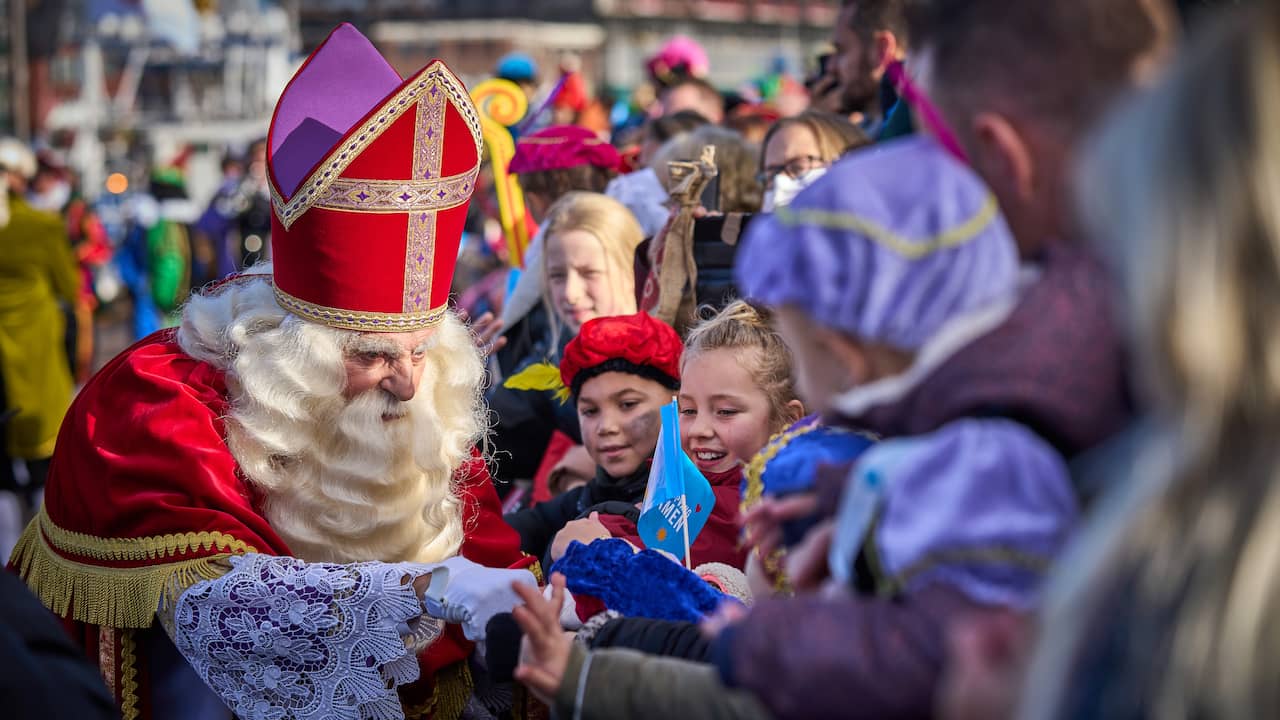Sinterklaas has returned to the country. Wearing a shoe, writing poetry, singing songs – the party is a big part of Dutch culture. The celebration also revives the discussion about Zwarte Piet. Why do we cling so much to traditions?
King’s Day, clog-making, May 4 and 5, Hindu festival Holi, summer carnival in Rotterdam, natural ice skating, consumer fireworks on New Year’s Eve and bonfires in Scheveningen. They are examples of rituals and traditions in the Netherlands that are passed down from generation to generation, or in other words, intangible heritage.
“Society is constantly evolving and traditions change with it,” Udo Feitsma tells NU.nl. He is spokesperson for the Knowledge Center for Intangible Heritage Netherlands. The celebration of Sinterklaas has also changed over time. We still celebrate the holiday, but many of us now do it without Zwarte Piet. Yet for a part of the population it seems like they have to give up an important tradition. Why is it so difficult to say goodbye to a tradition or part of it?
In 1850, Zwarte Piet is first depicted as a servant of Sinterklaas in an illustrated book by Jan Schenkman. When there were the first criticisms of Zwarte Piet is not entirely clear. appeared in 1930 The green already an article in which a stand was taken against caricature. Almost a hundred years later, Zwarte Piet’s appearance has changed in many places in the Netherlands. At the same time, just over half of the Dutch think Piet should stay black. This is evident from the annual Sinterklaas survey One today.
Change takes time
“It is true that the first sounds of criticism of Zwarte Piet go back a long way, but the serious objection of opponents has now existed for more than ten years. It is too little to change a tradition,” says mass psychologist Hans van de Sande . “The fact that the Sinterklaas festival, including Zwarte Piet, is for many a positive memory of their childhood makes it difficult to distance oneself from this tradition.”
“It can be quite tricky when traditions change, but it still happens,” says Kathleen Ferrier, chair of the Unesco committee. “Your birthday changes as you get older, flower parades were canceled during the corona time and Queen’s Day changed its date and became King’s Day.”
According to Van de Sande, people find it difficult to say goodbye to Zwarte Piet if they have no negative associations or intentions. “But Zwarte Piet is offensive to a lot of people in our country,” says Ferrier, “and so it doesn’t matter whether he historically as a figure is meant to do harm or not.”
In the center, nothing changes
The Knowledge Center greeted the Sinterklaas party with Zwarte Piet. As of June 2022, it is no longer in the intangible heritage list. The party was presented at the Knowledge Center in 2015 by the Sint & Pietengilde Foundation.
“The interim consultations have shown that not enough account is taken of large groups that find Zwarte Piet offensive. Even if this is not the intention, it is the result,” says Feitsma. The review committee therefore advised the Knowledge Center to publish the Sinterklaas celebration, as guaranteed by the Sint & Pietengilde. The Knowledge Center has adopted that advice.
That was the first time that the intangible heritage was canceled because it did not meet the Unesco guidelines. This does not mean that the holiday will never be on the list again, among all other rituals and traditions. The Knowledge Center encourages people to register their own variation of the Sinterklaas celebration.
Ferrier: “It is precisely the traditions deeply rooted in our society that move with the times. Sinterklaas as a tradition has not disappeared, it is just different from before. There are still rumors, children gasp as they watch the Sinterklaas news, put on their shoes, have wish lists and celebrate Christmas Eve. There is a lot to hold on to and look forward to. The power of tradition is that the core always remains.”


